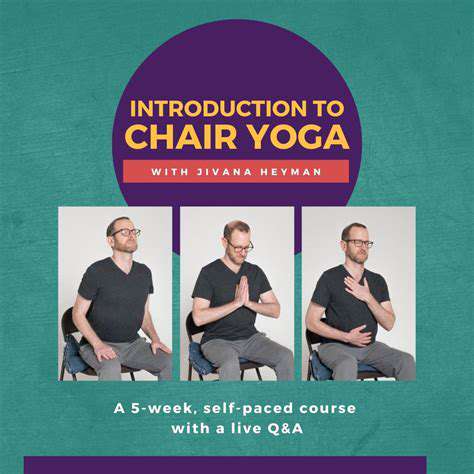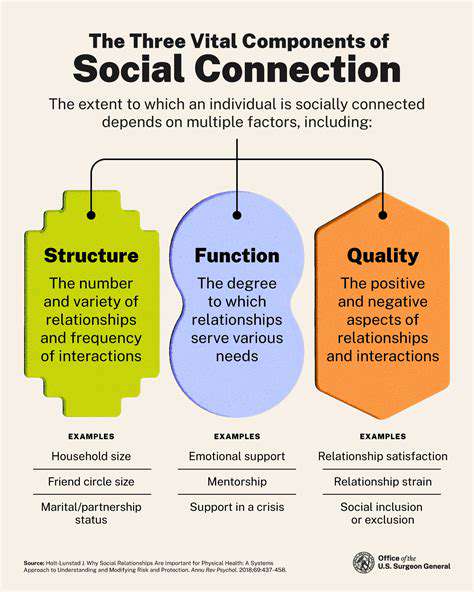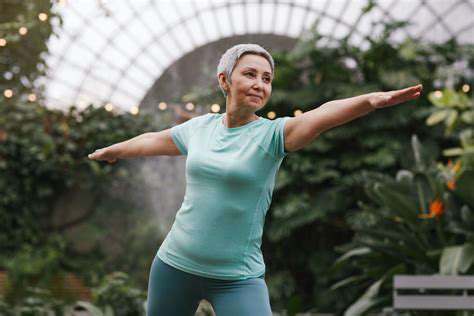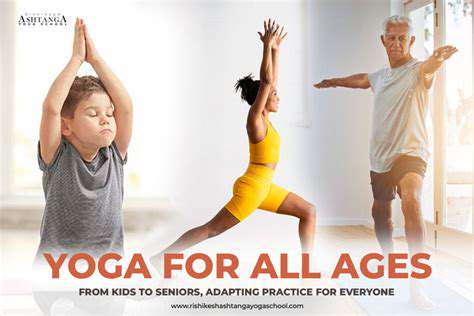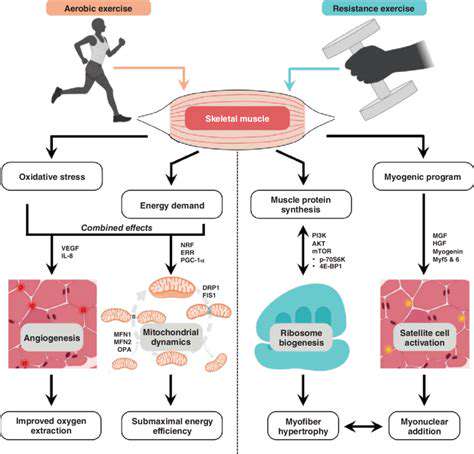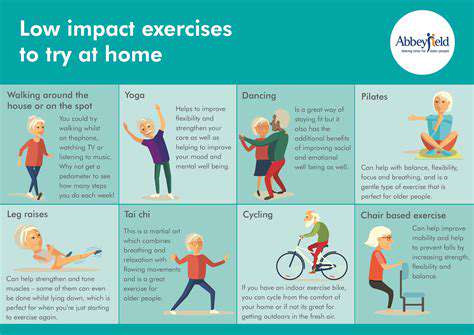Walking for Seniors with High Blood Pressure: A Safe Approach
Creating a Sustainable Walking Routine
Planning Your Walking Routine
Creating a sustainable walking routine for seniors with high blood pressure involves careful planning and gradual progression. Begin by assessing your current fitness level and consult with your doctor before starting any new exercise program. A doctor can help determine appropriate intensity levels and duration to avoid overexertion or potential complications. It's crucial to start small, perhaps with just 10-15 minutes of walking a few times a week, and gradually increase the duration and frequency as your fitness improves. Consistency is key; aim for regular walks, even if it's just a short stroll around the block, to build a habit and see positive results.
Consider your surroundings and choose a safe, accessible route. Flat, paved paths are often ideal for beginners, but you can gradually incorporate hills and varied terrain as your strength and endurance improve. If possible, walk with a companion for added safety and motivation. Wearing appropriate footwear is also essential, ensuring comfortable, supportive shoes that provide adequate cushioning and stability to protect your joints.
Incorporating Walking into Your Daily Life
Integrating walking into your daily routine can significantly boost its effectiveness and make it more sustainable. Think about ways to incorporate short walks into your daily schedule, such as taking the stairs instead of the elevator, parking further away from your destination, or walking during your lunch break. These small changes can add up to substantial improvements in your overall physical activity levels. Planning your walks in advance, scheduling them into your calendar, can make them a non-negotiable part of your day. Similarly, consider using a pedometer or fitness tracker to monitor your steps and stay motivated to reach your daily goals.
Monitoring Your Progress and Making Adjustments
Regularly monitoring your progress is essential for a sustainable walking routine. Pay attention to how your body feels during and after each walk. Keeping a journal or using a fitness app can help track your walks, noting the duration, distance, and your perceived exertion level. Listen to your body and take rest days when needed. Adjusting your routine based on your progress is crucial. If you experience any pain or discomfort, modify your routine or consult your doctor immediately. Gradually increasing the intensity and duration of your walks allows for consistent progress without causing undue stress on your body. Celebrating milestones, no matter how small, can help you stay motivated and committed to your walking journey.
Tips for Staying Safe While Walking
Choosing the Right Time and Place
Selecting a suitable time for your walk is crucial for safety, especially if you have high blood pressure. Avoid walking during the hottest parts of the day, when the sun's rays are strongest. Instead, opt for early mornings or evenings when the temperature is cooler and the sun is less intense. Also, choose well-lit, populated areas for your walks. Paths with other people around, or near shops, parks, or residential areas, offer increased visibility and a sense of security, reducing the risk of accidents or unexpected situations.
Consider the terrain. Smooth, paved paths are generally safer than uneven or rocky trails. If you choose a trail, be mindful of potential hazards like slippery surfaces or hidden obstacles. Knowing the route beforehand, or having a companion, can make a significant difference in your safety.
Proper Footwear is Essential
Wearing supportive, comfortable shoes is paramount for a safe and enjoyable walk. Shoes with good arch support and cushioning can help prevent foot pain and injuries, which are particularly important for seniors with potential foot issues. Avoid walking in sandals or shoes with thin soles, as they offer less protection and support. Ensure your footwear fits properly and is appropriate for the type of terrain you'll be walking on. Inspect your shoes regularly to make sure they haven't worn down or damaged.
Maintaining a Steady Pace
While walking for exercise is beneficial, maintaining a safe pace is equally important. Don't try to do too much too soon. Start with shorter walks at a comfortable pace and gradually increase the duration and intensity as your fitness improves. Listen to your body and take rest breaks when needed. A steady, controlled pace helps prevent dizziness, strain, and unexpected falls.
Staying Hydrated and Aware
Carrying a water bottle and drinking water before, during, and after your walk is crucial for maintaining hydration, especially when exercising. Dehydration can lead to dizziness and fatigue, making you more susceptible to falls or accidents. Be mindful of your surroundings, paying attention to traffic, potential hazards like uneven pavement, or unexpected obstacles. Keep your senses alert and avoid distractions like cell phones to prevent accidents.
Involving a Companion for Added Safety
Walking with a companion can significantly enhance your safety. Having someone with you provides a sense of security and support, especially if you have any concerns about your blood pressure or balance. If possible, choose a companion who is familiar with the route and can assist you if needed. Having someone present can deter potential risks and offer an extra pair of eyes.
Monitoring Blood Pressure During and After Walks
Regularly monitoring your blood pressure before, during, and after your walks is crucial for managing your high blood pressure effectively. This monitoring allows you to adjust your pace or seek medical attention if necessary. Be aware of any unusual symptoms during or after your walks, such as chest pain, shortness of breath, or dizziness. Documenting your blood pressure readings can provide valuable information for your healthcare provider.
Considering Medical Conditions and Medication
If you have any pre-existing medical conditions, such as high blood pressure, arthritis, or balance issues, it's vital to discuss your walking plan with your doctor before starting. They can provide personalized advice and recommendations regarding your safety and well-being. Additionally, be mindful of any medications you may be taking and their potential effects on your body during and after exercise. If you're unsure about how your medication might affect your walk, consult your doctor or pharmacist.
